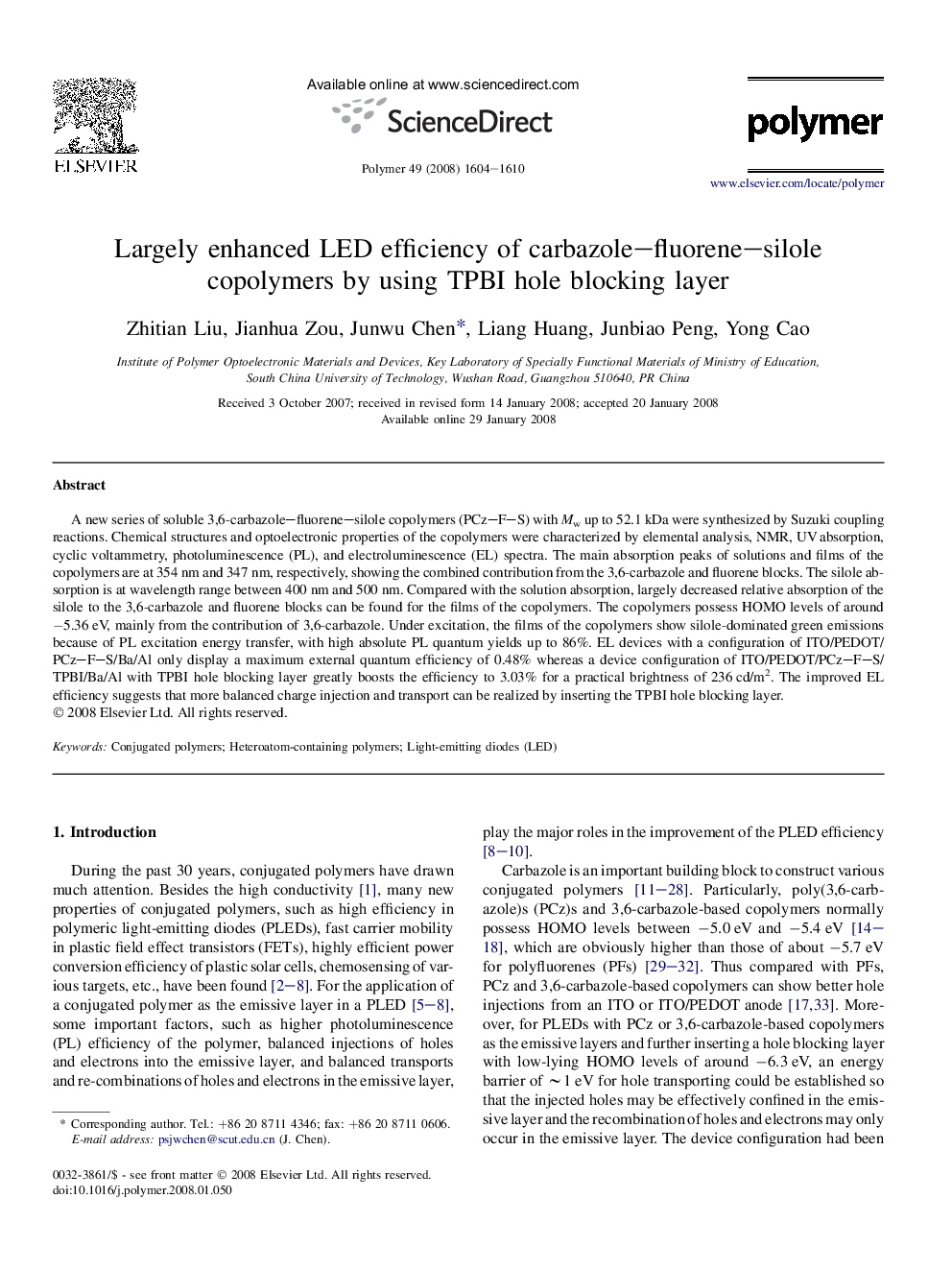| Article ID | Journal | Published Year | Pages | File Type |
|---|---|---|---|---|
| 5187903 | Polymer | 2008 | 7 Pages |
Abstract
A new series of soluble 3,6-carbazole-fluorene-silole copolymers (PCz-F-S) with Mw up to 52.1 kDa were synthesized by Suzuki coupling reactions. Chemical structures and optoelectronic properties of the copolymers were characterized by elemental analysis, NMR, UV absorption, cyclic voltammetry, photoluminescence (PL), and electroluminescence (EL) spectra. The main absorption peaks of solutions and films of the copolymers are at 354 nm and 347 nm, respectively, showing the combined contribution from the 3,6-carbazole and fluorene blocks. The silole absorption is at wavelength range between 400 nm and 500 nm. Compared with the solution absorption, largely decreased relative absorption of the silole to the 3,6-carbazole and fluorene blocks can be found for the films of the copolymers. The copolymers possess HOMO levels of around â5.36 eV, mainly from the contribution of 3,6-carbazole. Under excitation, the films of the copolymers show silole-dominated green emissions because of PL excitation energy transfer, with high absolute PL quantum yields up to 86%. EL devices with a configuration of ITO/PEDOT/PCz-F-S/Ba/Al only display a maximum external quantum efficiency of 0.48% whereas a device configuration of ITO/PEDOT/PCz-F-S/TPBI/Ba/Al with TPBI hole blocking layer greatly boosts the efficiency to 3.03% for a practical brightness of 236 cd/m2. The improved EL efficiency suggests that more balanced charge injection and transport can be realized by inserting the TPBI hole blocking layer.
Related Topics
Physical Sciences and Engineering
Chemistry
Organic Chemistry
Authors
Zhitian Liu, Jianhua Zou, Junwu Chen, Liang Huang, Junbiao Peng, Yong Cao,
